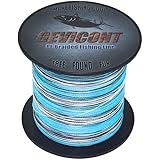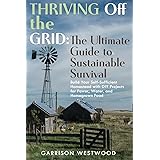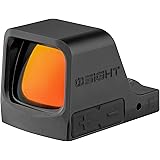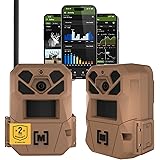The Stevens 301 Single-Shot 12-Gauge: A Top-Tier Survival Firearm Endorsed by Dave Canterbury
In the challenging world of survival and self-reliance, selecting the right gear is paramount. When it comes to firearms, the quest for a weapon that offers versatility, reliability, and affordability often presents a significant hurdle. Many enthusiasts seek a single solution capable of handling diverse scenarios, from hunting small game to providing defense in unforeseen circumstances. As showcased in the video above by survival expert Dave Canterbury, the single-shot 12-gauge shotgun stands out as an exceptionally versatile option, with the Stevens 301 emerging as a front-runner for both short-term and long-term preparedness.
Canterbury, known for his pragmatic approach at Self-Reliance Outfitters and the Pathfinder School, identifies the Stevens 301 as a top contender in his series on essential survival firearms. Having personally owned “boxes and boxes” of different shotguns, including approximately 25 to 30 single-shot models, his endorsement of the Stevens 301 carries significant weight. He emphasizes its robust design and feature set, making it a compelling choice for anyone prioritizing functional efficiency in a survival firearm. This article delves deeper into why the Stevens 301, a specific single-shot 12-gauge shotgun, earns its place in the elite ranks of survival tools.
The Unmatched Versatility of the 12-Gauge Shotgun for Preparedness
The 12-gauge shotgun is often heralded as one of the most versatile firearms available, and for good reason. Its ability to chamber a wide array of ammunition types makes it adaptable to almost any situation encountered in a survival scenario. From birdshot, ideal for small game hunting, to buckshot for larger game or defense, and slugs capable of taking down bigger animals or engaging targets at moderate distances, the 12-gauge platform offers unparalleled flexibility. This inherent adaptability significantly reduces the need for multiple specialized firearms, streamlining a prepper’s toolkit.
Beyond traditional ammunition, the 12-gauge truly shines with the advent of specialized adapters. Companies like Short Lane Arms offer innovative solutions, including “stack pack” adapters that allow a 12-gauge chamber to accept smaller shotgun shells like 20-gauge or .410 shotshells. Even more impressive are the 8-inch rifled adapters available for a multitude of pistol and rimfire calibers, such as 9mm, .38 Special, .22 Magnum, and .22 Long Rifle. This functionality allows users to match the shotgun’s capabilities with a sidearm they might already be carrying, effectively consolidating ammunition types and increasing the overall utility of a single survival firearm. This ability to shoot diverse calibers from one platform ensures resourcefulness in any given situation.
Another layer of versatility comes from the often-overlooked muzzle-loading capability of a single-shot 12-gauge. With a simple primer plug, which can be purchased from suppliers like Short Lane Arms or even crafted, the shotgun can be loaded from the muzzle using a 209 shotgun primer for ignition. This allows for the use of improvised projectiles and black powder, turning the firearm into a rudimentary, yet effective, muzzleloader when conventional ammunition is exhausted. Furthermore, 12-gauge shells are among the easiest and most cost-effective to reload, with components widely available and processes relatively simple to master. This self-sufficiency in ammunition production is a critical aspect of long-term survival planning, ensuring continued use of the firearm.
Stevens 301: Key Features for Survival and Self-Reliance
While the inherent versatility of the 12-gauge platform is undeniable, the Stevens 301 specifically integrates features that enhance its value as a survival firearm. This model incorporates several design elements that set it apart from many other budget-friendly single-shot options. These attributes contribute to its reliability, ease of use, and overall effectiveness in demanding environments. An understanding of these features reveals why it is favored by experienced survivalists.
Adaptable Chokes for Any Scenario
One of the standout features of the Stevens 301, especially for a firearm in its price range, is the inclusion of screw-in chokes. Unlike many fixed-choke shotguns that offer only a modified or full choke, the Stevens 301 accommodates interchangeable Win chokes. This allows the user to quickly adjust the shot pattern to suit different hunting or defense scenarios. Whether a tight pattern is needed for turkeys or slugs with a full choke, a modified choke for general hunting, or a wide, open pattern with a cylinder bore choke for close-range defensive use or shooting birdshot, the adaptability is invaluable. This feature dramatically expands the practical applications of the single-shot 12-gauge, making it suitable for a broader range of game and distances.
Enhanced Sighting and Portability
The Stevens 301 often surprises users with its thoughtfully designed sighting system. While it maintains a traditional bead sight at the front, the receiver incorporates a unique rear sighting device. When the hammer is cocked and the action closed, this allows for a more precise sight picture when aligning the front bead. This is a significant improvement over many older single-shot shotguns, like the H&R models that Dave Canterbury traditionally preferred, which often rely solely on the front bead. Additionally, the Stevens 301 comes standard with sling swivels, a seemingly minor detail that proves crucial for hands-free carry during long treks or when performing other tasks. The ability to comfortably carry the firearm across terrain is essential for practicality in survival situations.
Streamlined Takedown and Storage
A critical advantage of the Stevens 301 is its no-tool takedown design, which allows the firearm to be broken down into two completely separate, compact pieces. By pushing a simple button, the handguard detaches, releasing the barrel from the receiver. This innovative design goes beyond the typical folding action of many budget single-shot shotguns, which merely hinge in the middle and remain partially connected. The ability to separate the barrel completely not only makes cleaning significantly easier but also enhances packability. For storage in a backpack, vehicle, or small dwelling, this compact breakdown capability is invaluable, offering discreet and efficient transportation of the survival firearm.
Durability and Recoil Management
The construction of the Stevens 301 speaks volumes about its ruggedness. The stock and forend are crafted from a heavy-duty ABS material, known for its resilience and ability to withstand harsh outdoor conditions. Dave Canterbury notes the substantial thickness and solid feel of the plastic, indicating its robust build quality. This ensures the firearm can endure impacts and rough handling without compromise, a necessity for any piece of survival gear. Furthermore, the inclusion of a comfortable rubber recoil pad significantly mitigates the felt recoil, even when shooting powerful loads like slugs. This feature enhances shooting comfort and allows for more consistent accuracy, enabling users to practice more and become proficient with their single-shot 12-gauge.
The Stevens 301: An Affordable Survival Champion
One of the most compelling aspects of the Stevens 301 is its remarkable cost-effectiveness without sacrificing essential features. While some shotguns might be marginally cheaper, they often lack critical attributes like screw-in chokes or a proper sighting system. Dave Canterbury recalls purchasing his Stevens 301 for “less than 130 bucks” a few years prior, and even today, new models are typically “well under 200 bucks.” Used examples can frequently be found for around $100 or less, making it an incredibly accessible option for budget-conscious preppers and survivalists. This affordability makes it an excellent entry point for new users or a reliable backup firearm for experienced individuals.
Some users occasionally express concerns about the inclusion of a manual safety on the Stevens 301, arguing it complicates operation. However, as Canterbury demonstrates, this safety can often be ignored by those who prefer to rely on safe handling practices rather than a mechanical device. He notes that he has never accidentally engaged or disengaged the safety in three years of rigorous use. The gun’s design ensures that even if the hammer is dropped with the safety on, the firing pin will not make contact with the primer, providing an additional layer of security for those who choose to utilize it. For its price point, any minor perceived drawback is easily overshadowed by its overall value.
Strategic Ammunition Management for Single-Shot Efficiency
The primary perceived limitation of a single-shot firearm is the slower follow-up shot. However, this can be largely mitigated through strategic ammunition management. Dave Canterbury demonstrates a practical method: using Velcro strips that hold five 12-gauge shells, attached to an opposing Velcro strip on the buttstock. This allows for quick and easy access to additional rounds, significantly reducing reload time. A typical loadout might include three or four birdshot shells for small game, coupled with one or two slugs for defense or larger targets, demonstrating the immediate adaptability of the setup. Stashing several pre-loaded Velcro strips in a backpack ensures a ready supply of ammunition, enhancing the readiness of the single-shot 12-gauge.
Mastering the rapid reload technique is crucial for maximizing the effectiveness of a single-shot shotgun. With practice, users can become quite proficient at breaking open the action, ejecting the spent hull, inserting a new shell, and closing the action quickly. This physical skill, combined with smart ammunition staging, transforms the single-shot’s perceived weakness into a manageable factor. The simplicity of the single-shot design also means fewer moving parts to break, contributing to its legendary reliability in adverse conditions where complex mechanisms might fail. This makes the Stevens 301 a dependable choice for any survival scenario.











